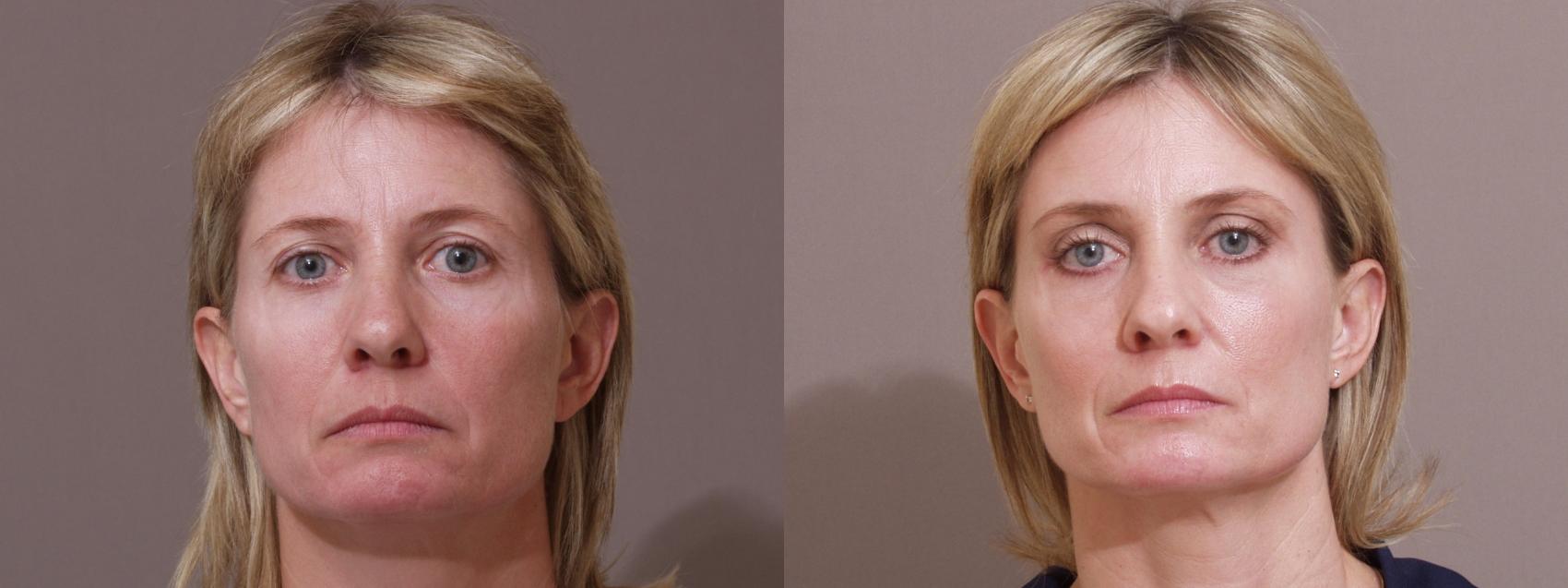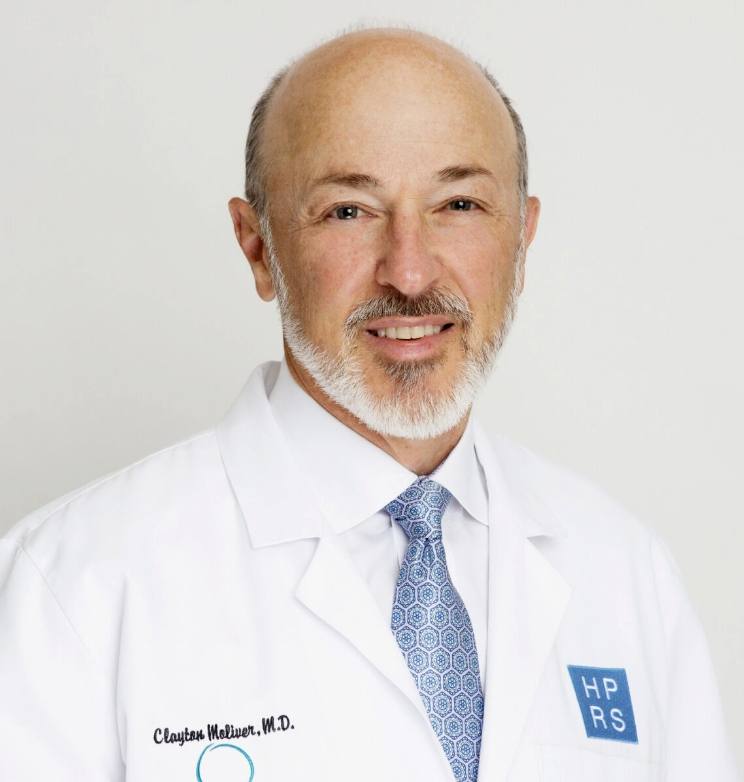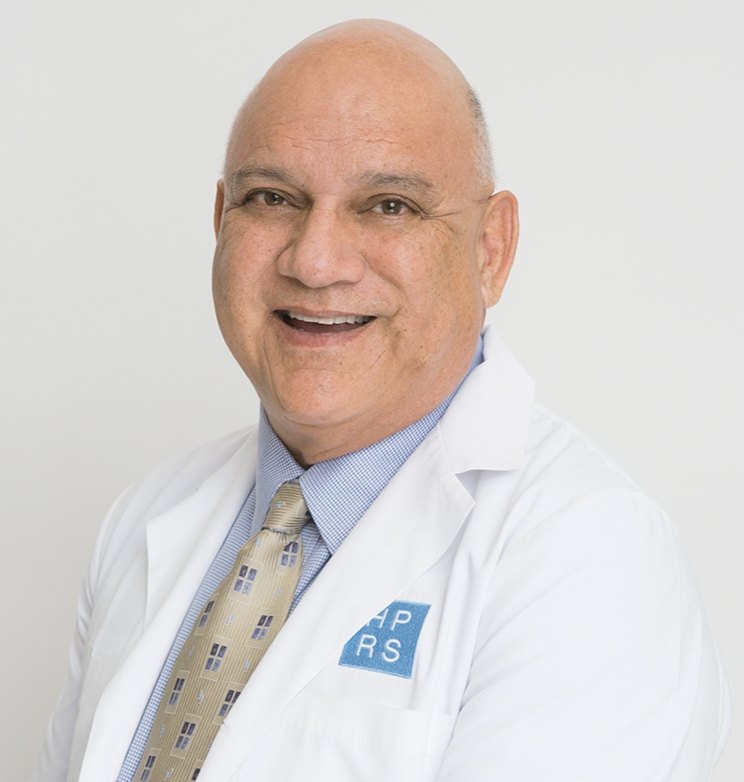- Excess skin obscuring the natural fold of the upper eyelids
- Loose skin hanging down from the upper eyelids, perhaps impairing vision
- A puffy appearance to the upper eyelids, making the eyes look tired
- Excess skin and fine, “crepe paper type” wrinkles of the lower eyelids
- Bags and dark circles under the eyes
- Lower eyelid droopiness

Clear Lake
Houston Plastic and Reconstructive Surgery
575 East Medical Center Boulevard
Webster, TX 77598
Phone: (281) 282-9555
Monday–Friday: 8 a.m.–5 p.m.
Med Center/Museum District
Houston Plastic and Reconstructive Surgery
1801 Binz Street #300
Houston, TX 77004
Phone: (713) 521-4777
Monday–Thursday: 8 a.m.–5 p.m.
Eyelid Surgery
Eyelid surgery, technically called blepharoplasty, at Houston Plastic and Reconstructive Surgery is a procedure to remove fat – usually along with excess skin and muscle – from the upper and lower eyelids. Eyelid surgery can correct drooping upper lids and puffy bags below your eyes – features that make you look older and more tired than you feel, and may even interfere with your vision. Each eyelid surgery patient’s operative plan is unique. Our modern techniques avoid an over-resection of fat, an outdated practice that routinely produced a gaunt, older look.
To find out how eyelid surgery at Houston Plastic and Reconstructive Surgery can help you look refreshed and more youthful, request a consultation online to meet with one of our plastic surgeons or call (281) 282-9555 and a member of our staff will help schedule an appointment.
Many of our blepharoplasty patients choose a forehead lift at the same time, to lift sagging eyebrows. Others combine eyelid surgery with facial laser resurfacing to help smooth and rejuvenate the skin. Of course, eyelid surgery is frequently done in conjunction with facelift surgery.
Eyelid surgery can enhance your appearance and your self-confidence. The best candidates for this procedure are men and women who are age 35 or older; but if droopy, baggy eyelids run in your family, you may decide to have eyelid surgery at a younger age.
“I look years younger with my droopy, baggy eyelids removed.”
“I love having a place to put eye shadow again.”
“No one asks me any more if I’m tired. They just say I look great.”
Before you decide to have this surgery, consult with a plastic surgeon who is well trained and experienced in his or her specialty, plastic surgery. Discuss your goals and expectations and look at before and after photos to help you make an informed choice. You’ll need to discuss whether to do all four eyelids or just the upper or lower ones, whether skin as well as fat will be removed, and whether any additional procedures are appropriate. Our computerized video imaging allows you to preview the new you before surgery.
Eyelid surgery is performed on an outpatient basis in our AAAASF accredited surgical suite. The procedure is short – from 30 to 90 minutes – and the recovery time is quick. Within a few days, you’ll be able to read or watch television. Most people feel ready to go out in public (and back to work) in 7 to 10 days.
On our younger eyelid surgery patients, we are often able to perform what is called “no-scar eyelid surgery,” or “transconjuctival blepharoplasty.” If you have a pocket of fat beneath your lower eyelids but don’t need to have any skin removed, we make an incision inside your lower eyelid, leaving no visible scar.
Even when we remove fat, we use a laser to seal the blood vessels, so no stitches are needed. With laser-assisted blepharoplasty, there is less bleeding, less swelling and bruising, and faster healing.
For all patients, the positive results of eyelid surgery – a more alert and youthful look – should last for years.

Am I a Good Candidate for Eyelid Surgery?
Any one or combination of the following conditions may indicate that you may be considered a good candidate for eyelid surgery:
Results of Your Eyelid Surgery
Aesthetic eyelid surgery has the effect of making you look more rested, refreshed and alert. Since the healing process is gradual, you should expect to wait at least several weeks to get an accurate picture of the results of your eyelid surgery. Incisions will fade over a number of months usually becoming barely visible. The results of aesthetic eyelid surgery are usually long-lasting, but they may be affected by heredity and certain lifestyle factors.
 Removal of fat from your eyelids, which is usually the cause of puffiness and bags, is permanent, and these conditions generally will not recur. The skin continues to age, however, and skin laxity along with the fine wrinkling of the eyelid area may, at some point, return. Sometimes loss of tone in the forehead causes additional sagging of the eyebrows which mimics a recurrence of drooping upper eyelids. If this happens, correction may require a forehead lift or a secondary eyelid procedure.
Removal of fat from your eyelids, which is usually the cause of puffiness and bags, is permanent, and these conditions generally will not recur. The skin continues to age, however, and skin laxity along with the fine wrinkling of the eyelid area may, at some point, return. Sometimes loss of tone in the forehead causes additional sagging of the eyebrows which mimics a recurrence of drooping upper eyelids. If this happens, correction may require a forehead lift or a secondary eyelid procedure.
Even though the aging process continues, patients are usually happy with their appearance for many years following eyelid surgery. Some patients find that they want to make additional improvements at a later time.
How Will I be Evaluated for Aesthetic Eyelid Surgery?
Your Eyelid Surgery Personal Consultation
During the initial consultation, you may be asked to look in a mirror and point out exactly what you would like to see improved. This will help your surgeon understand your expectations and determine whether they can be realistically achieved.
You should come to the consultation prepared to discuss your medical history including previous surgeries, past and present medical conditions and current medications. It is important for you to provide complete information. High blood pressure, thyroid problems, diabetes, etc. should be reviewed as these medical conditions may increase some risks associated with eyelid surgery.
We will want to know if you have allergies, especially if they affect your eyes.
It will be necessary for your surgeon to know if you were ever told by an ophthalmologist that you have a condition called “dry eye” or if you have any other problems with your eyes.
Upper Eyelids
For upper eyelid surgery, generally, an incision is hidden within the natural fold of the upper eyelid and extends slightly beyond the outside corner into the laugh lines or other existing creases. Through this incision, excess skin and fatty tissue are removed. Because the incision follows the natural contour of the upper eyelid, is usually inconspicuous.
Lower Eyelids
 For lower eyelid surgery, an incision is hidden just below the lower lashes. Through this incision, excess skin, muscle and fat are removed, or fat may be redistributed to eliminate puffiness or bulges. Other adjustments to correct special problems such as muscle laxity may be performed. As in upper eyelid surgery, placement of the incision in natural crease lines allows for the scar to usually heal in an inconspicuous fashion. In some cases, you and your surgeon may decide that the best approach for removing excess fat is through an incision placed inside the lower eyelid. This technique requires no external incision, but it cannot be used to remove excess skin. A laser may sometimes be used in conjunction with this method to tighten the lower eyelid skin.
For lower eyelid surgery, an incision is hidden just below the lower lashes. Through this incision, excess skin, muscle and fat are removed, or fat may be redistributed to eliminate puffiness or bulges. Other adjustments to correct special problems such as muscle laxity may be performed. As in upper eyelid surgery, placement of the incision in natural crease lines allows for the scar to usually heal in an inconspicuous fashion. In some cases, you and your surgeon may decide that the best approach for removing excess fat is through an incision placed inside the lower eyelid. This technique requires no external incision, but it cannot be used to remove excess skin. A laser may sometimes be used in conjunction with this method to tighten the lower eyelid skin.
Understanding Risks of Eyelid Surgery
Fortunately, significant complications from aesthetic eyelid surgery are infrequent. Every year, many thousands of people undergo eyelid surgery successfully, without experiencing any major problem.
The risks in most surgeries are similar. Some of the potential complications that may be discussed with you include hematoma (an accumulation of blood under the skin that may require removal), infection, changes in sensation, scarring, allergic reactions, and damage to underlying structures. The need for revisions or unsatisfactory results may possibly necessitate additional procedures and may include medical risks. Following eyelid surgery, there can be a feeling of dryness or irritation in the eye that requires treatment. There is a possibility of impaired eyelid function that sometimes may need to be corrected by additional surgery.
You can help minimize certain risks by following the advice and instructions you are provided both before and after your eyelid surgery.
The Day of Eyelid Surgery
Your eyelid surgery will be performed in our fully accredited AAAASF facility. Medications are administered for your comfort during the surgical procedure. Frequently, local anesthesia and intravenous sedation are used for patients undergoing eyelid surgery, although general anesthesia may be desirable in some instances. For your safety during the operation, various monitors are used to check your heart, blood pressure, pulse and the amount of oxygen circulating in your blood.
When surgery is completed, you will be taken into a recovery area where you will continue to be closely monitored. Your vision will be blurry as a result of the ointment used to soothe and protect the eye during surgery as well as from the swelling that is a normal aftermath of eyelid procedures. There should be surprisingly little discomfort from the surgery. You will be permitted to go home after a short period of observation.
Eyelid Surgery Recovery
Recovery time after blepharoplasty surgery is fairly quick, with most patients returning to their normal routines within 7 – 10 days. As with most surgical procedures, it is important to take it easy and get a lot of rest the first 48 hours following surgery. During this time, you should keep your head elevated to minimize swelling and sleep on your back. During the first few days, patients experience varying degrees of swelling and bruising. For most, the majority of swelling goes down within the first week and patients can return to work shortly after. Makeup can usually be applied within the first week to camouflage any discoloration.
How Much Will Eyelid Surgery Cost in Houston?
The price for eyelid surgery at Houston Plastic & Reconstructive Surgery varies with the specifics of your surgery, such as whether it’s done on the upper eyelids, lower eyelids, or both.
We always present our plastic surgery consultation patients with a “fee quote.” This fee includes:
- Surgeon’s professional fee
- Facility fee
- Anesthesia fee
It does not include any laboratory tests, preoperative examinations, garments or postoperative prescriptions.
Payment Options
We’ll work with you to make your aesthetic dreams come true. We offer flexible financing plans to meet most budgets.
Learn MoreMaintaining a Relationship with Your Plastic Surgeon
You will return to our office for follow-up care at prescribed intervals, at which time your progress will be evaluated.
Please remember that our relationship with you does not end when you leave the operating room. If you have questions or concerns during your recovery or need additional information at a later time, you should contact us.
Consultation
For more information about our facial plastic surgery procedures, request a consultation online or call (281) 282-9555 to schedule your visit.
Please see the facelift category of our photo gallery since many of our facelift patients have also had forehead lifts and eyelid surgery.
Meet Our Plastic Surgeons
Each plastic surgeon on our team has the training, experience, and talent needed to provide the natural-looking results patients want while ensuring their safety and comfort.
Request Your Consultation


